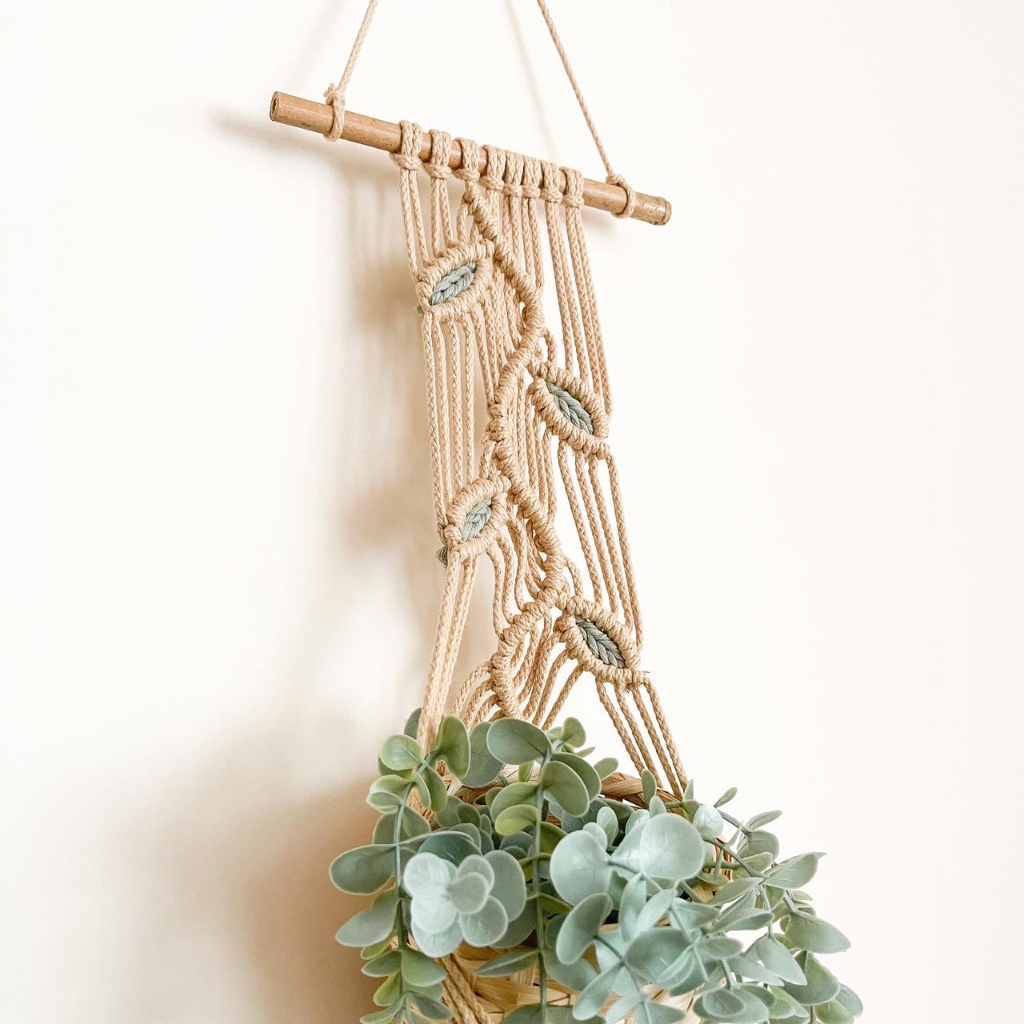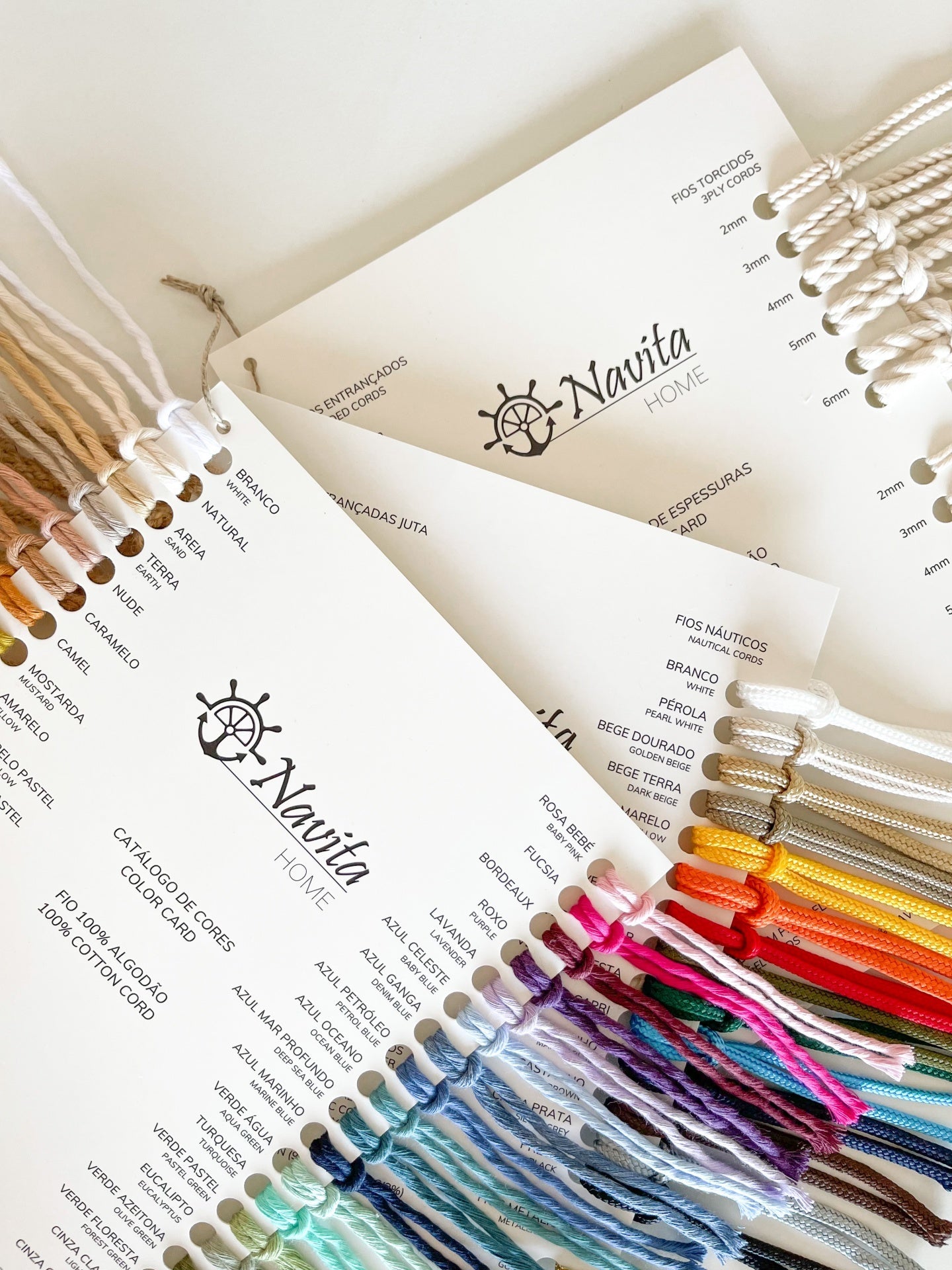
What is the best yarn to make a macramé plant hanger?
Partilhar
Choosing the right wire is essential to creating a durable plant hanger that looks just right. In this article, we’ll walk you through some options and tips to help you decide which one is best for you.
What is the best yarn to use to make a macramé plant hanger? This is probably one of our Top 3 most frequently asked questions. And the answer is…EVERYONE! But…how come?
Any type of wire can be used to make a plant hanger. However, there is one thing to always keep in mind: the choice will always depend on the effect you want for the work and, of course, your personal taste (or that of your client, if applicable).
Imagine you want a simple but sturdy plant stand. For this purpose, we suggest our Braided Cotton Cord . As it is a consistent and flat cord, it offers the support more resistance and durability and achieves a more constant dynamic, without great complexity. If you are a fan of simplicity, this is the ideal cord for your plant pot support!
See below some creations with our yarn.


“I don’t like the flattened effect. I like a rounder effect.” Then you should use our Parallel Braided Cotton Cord . This is a cord with the same resistance, the only difference is its more rounded configuration, created for those who also appreciate simplicity, but with a touch that makes a difference.
See for yourself in these creations:


Attention! These two strands are quite difficult to unravel, hence their greater resistance. To make fringes with this yarn, you will need a brush with steel bristles and a little patience to be able to unravel and comb it.
If you are thinking of making a plant hanger for the outdoors, nautical yarn is an excellent choice due to its durability and resistance. These yarns can be washed and exposed to the elements, are ideal for outdoor use and are UV resistant. If you prefer a flatter, wider effect, we recommend braided nautical thread , which has a flat shape and is therefore wider. This braid is more resistant and compact, which makes it ideal for creating more structured knots. Although it slips slightly, it can be unraveled.
If, on the other hand, you want a more rounded and soft to the touch yarn, we recommend the tubular nautical thread , braided in needlepoint. This type of yarn is lighter and easier to work with knots, and is impossible to fray.


If you're more of a fan of fringes and a slightly bolder effect, giving the slight impression of a more elaborate piece, our Twisted Cotton Yarn is your cord of choice. It works very well for plant pot holders, even though it is a more malleable cord, its 3-strand twist allows it to be easily unraveled and combed, and with this, yes, you can end up with a big, fluffy fringe, or use it for details, as you can see in these creations:

Finally, you may want to use the famous string for your supports. We call it “ Cotton Wick ” here. Since it is a single rolled thread, softer and very unravelable, it is normal for it not to be as strong as the others, and it also frays easily, which makes it difficult to tie knots. We suggest using the wick, for example, in the case of succulent nests, which are miniature pot supports, like the example below with our thread:

Regarding the thickness of the wire, the most commonly used for supports are between 3mm (smallest) and 4mm (medium). Not to mention the colors in which you can make a support, to match the flowers, plants or any decoration!
What about you? Are you a fan of vertical gardens and supports for your plants? 🪴
In just a few minutes we make your choice easier, right?




